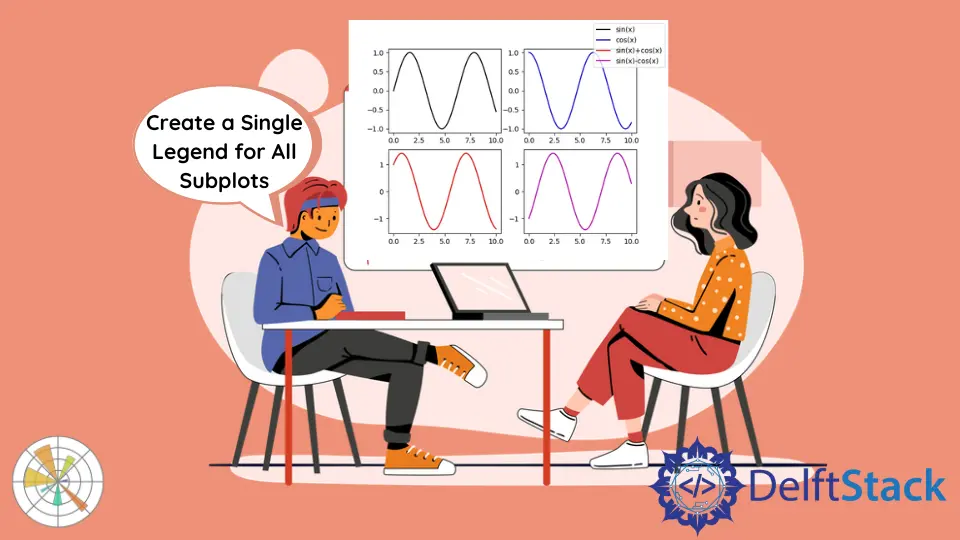Matplotlib 에서 모든 서브 플로트에 대한 단일 범례를 만드는 방법
-
Matplotlib 의
figure.legend메소드를 사용하여 모든 서브 플롯에 대한 단일 범례 만들기 -
Matplotlib 에서 라인 핸들과 라인이 다른 경우
figure.legend메소드를 사용하여 모든 서브 플롯에 대한 단일 범례 만들기

Matplotlib figure 클래스에는 legend 메소드가 있으며,legend 는 Figure 레벨에 배치하지만 subplot 레벨에는 배치하지 않습니다. 선 패턴과 레이블이 모든 서브 플로트에서 동일하면 특히 편리합니다.
Matplotlib 의 figure.legend 메소드를 사용하여 모든 서브 플롯에 대한 단일 범례 만들기
import matplotlib.pyplot as plt
fig = plt.figure()
axes = fig.subplots(nrows=2, ncols=2)
for ax in fig.axes:
ax.plot([0, 10], [0, 10], label="linear")
lines, labels = fig.axes[-1].get_legend_handles_labels()
fig.legend(lines, labels, loc="upper center")
plt.show()

lines, labels = fig.axes[-1].get_legend_handles_labels()
모든 서브 플롯이 같은 선과 레이블을 가지고 있다고 가정하기 때문에 마지막 ‘축’의 마지막 핸들과 레이블을 전체 그림에 사용할 수 있습니다.
Matplotlib 에서 라인 핸들과 라인이 다른 경우 figure.legend 메소드를 사용하여 모든 서브 플롯에 대한 단일 범례 만들기
서브 플롯간에 선 패턴과 레이블이 다르지만 모든 서브 플롯에 단일 범례가 필요한 경우 모든 서브 플롯에서 모든 라인 핸들과 레이블을 가져와야합니다.
import matplotlib.pyplot as plt
import numpy as np
x = np.linspace(0, 10, 501)
fig = plt.figure()
axes = fig.subplots(nrows=2, ncols=2)
axes[0, 0].plot(x, np.sin(x), color="k", label="sin(x)")
axes[0, 1].plot(x, np.cos(x), color="b", label="cos(x)")
axes[1, 0].plot(x, np.sin(x) + np.cos(x), color="r", label="sin(x)+cos(x)")
axes[1, 1].plot(x, np.sin(x) - np.cos(x), color="m", label="sin(x)-cos(x)")
lines = []
labels = []
for ax in fig.axes:
axLine, axLabel = ax.get_legend_handles_labels()
lines.extend(axLine)
labels.extend(axLabel)
fig.legend(lines, labels, loc="upper right")
plt.show()

for ax in fig.axes:
axLine, axLabel = ax.get_legend_handles_labels()
lines.extend(axLine)
labels.extend(axLabel)
하나의 서브 플롯에 더 많은 행과 레이블이 존재하는 경우 모든 행 핸들과 레이블이 extend 메소드와 함께 lines 및 labels 목록에 추가됩니다.
Founder of DelftStack.com. Jinku has worked in the robotics and automotive industries for over 8 years. He sharpened his coding skills when he needed to do the automatic testing, data collection from remote servers and report creation from the endurance test. He is from an electrical/electronics engineering background but has expanded his interest to embedded electronics, embedded programming and front-/back-end programming.
LinkedIn Facebook